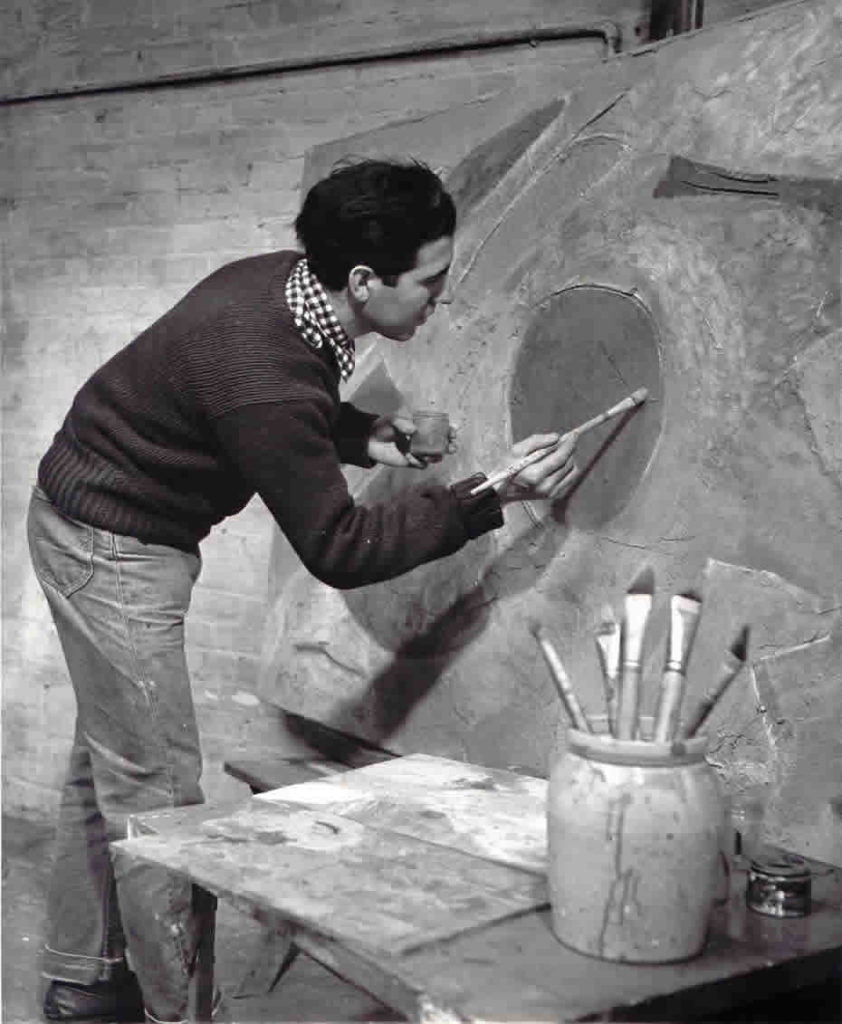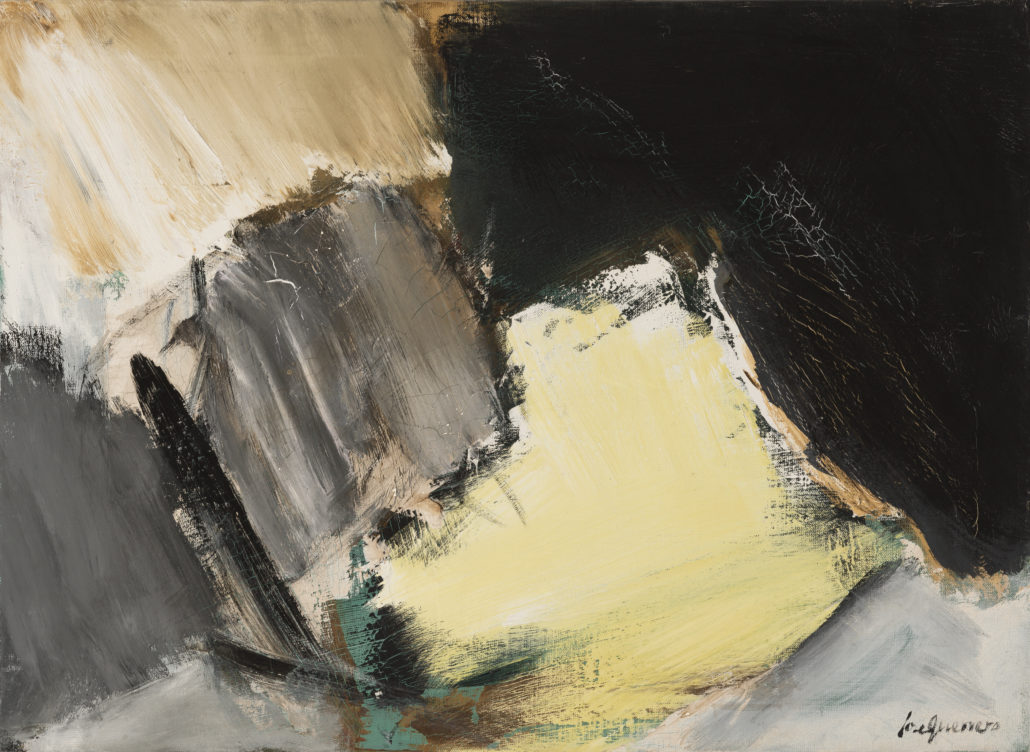José Guerrero: a journey towards abstract expressionism.
José Guerrero arrived in the United States in 1949 of November, to begin the stage that would forever transform the future of his career. With a background marked by the work of the great masters of the European avant-garde, Guerrero settled in the capital of modern art. In a New York city that was dominated by the heyday of Abstract Expressionism, the Granada-born painter was able to come into direct contact with action painting trends. The shock that Pollock’s works caused him awoke in him a voracious hunger for modernity and freedom, which led him, years later, to become one of the members, along with great names in the movement such as Rothko, Klein or Motherwell, of the so-called New York School. The oil-black-yellow from the iconic Betty Parsons gallery belongs to this very decisive stage in the shaping of his plastic language. In the artist’s own words, the sensation of freedom combined with another of grandeur that American expressionism produced in him made him understand that “there was an art with a scale different from that of Europe, with a spontaneity and vigor that did not need to resort to the past”

In the development of his American period, the Younger American painters exhibition at the Solomon R. Guggenheim Museum was especially important. , whose participation gave him notable notoriety that was even reflected in publications such as the one dedicated to him by Vogue magazine.. His full integration into the artistic life of New York came from the hand of the great gallery owner and dealer Betty Parsons. What was one of the greatest promoters of American Abstract Expressionism, also became one of its great supporters, exhibiting her works regularly between 1954 and 1963.
Works like this allow us to discover the creative freedom that he found in the overflowing energy of gestural painting, where the pictorial surface is transformed into a pure dialogue between form and color. Through the contrasting fields of color that expand and flow on the canvas – in this case of the black and yellow so characteristic of the painting of these years – it establishes a series of internal tensions and visual rhythms that turn the painting into a window to the artist’s most intuitive and emotional creative universe.
His work would never have been the same without Pollock’s overflowing spurts of color, Rothko’s fields of color, or Motherwell’s large, precisely delimited black structures. . But neither without the indelible residue of his roots, in which his friendship with the Garcia Lorca family or the trace of the black Spain of the Civil War shaped that battlefield turned into a canvas, where Guerrero undressed and confronted his life experiences.
Guerrero managed to make a name for himself among the effervescent and competitive art scene of the city of skyscrapers. But above all it was in this city where he found the freedom and purity that his canvases shouted since then.



